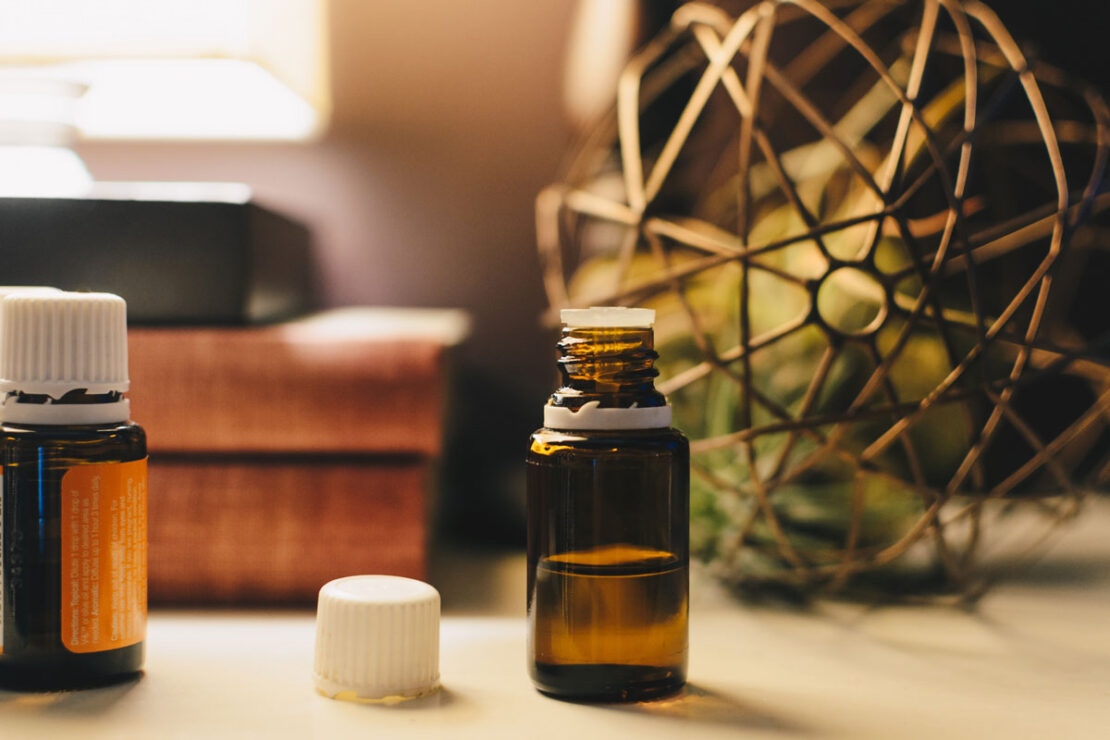
Kapha Massage Oil Recipe (Late Winter and Early Spring)
Massage oil, especially when infused with herbs, can be more than just a feel-good skin moisturizer. Ayurveda teaches that fat is closely connected to love, satisfaction, and protection (Svoboda, 1999). In addition to nourishing and nurturing the skin, using herbally infused homemade massage oils produces a grounding, supportive, and protective effect on the body and mind. Daily self-massage with oil, called abhyanga, is a wonderful practice for soothing vata dosha in particular but can be practiced with benefit by all types. The base oil and herbs can be adapted based upon your constitution and the season.
Kapha dosha predominates during late winter and early spring (O’Donnell, 2015). This time of year is marked by heaviness and dampness. Therefore, this kapha massage oil recipe features herbs and spices with a warming and invigorating energy. Mustard oil is light and warming, so it works well as a base during the kapha time of year. Almond oil is a good substitute if you want an oil with a slightly sweeter, more soothing energy.
Kapha Massage Oil Recipe
For simplicity, you can use any combination of the herbs suggested as long as the total amounts to one ounce of herb by weight. Yield: 4 ounces.
1 ounce total any combination of black pepper (Piper nigrum) fruit, clove (Syzygium aromaticum), dried ginger (Zingiber officinale) rhizome, calamus (Acorus calamus) rhizome, juniper (Juniperus spp.) berries, mustard (Brassica nigra) seeds, and orange (Citrus spp.) peel
6 ounces mustard oil
16 ounces water
- Place your herbs of choice (totaling one ounce) in a medium-sized saucepan with water.
- Bring mixture to a boil and then simmer until water is reduced by 50%.
- Remove mixture from heat.
- Add the oil to your saucepan along with the infusion/decoction and herbs.
- Heat until the water and oil just start to bubble, then reduce heat to a low simmer.
- Stir occasionally and ensure that the herbs are not scalding or sticking to the bottom of the pan.
- Simmer until all water evaporates and only oil and herbs remain.
- Look for these signs to indicate that water has evaporated: only very small bubbles being produced. (Oil creates small bubbles, whereas water creates large bubbles.) Hold a dry glass or glass plate over the pot. If you see any condensation, that means there is still water left.
- When you think the mixture is ready or close to it, go ahead and strain out the herbs. You should be left with 4-6 ounces of liquid oil. If you end up with more, simmer a bit longer.
To Use: Store in a capped glass jar or bottle out of direct sunlight and apply to skin daily—or as frequently as you like!
More Massage Oil Recipes
Vata Massage Oil Recipe (Fall and Early Winter)
Pitta Massage Oil Recipe (Summer and Late Spring)
Homemade Massage Oil for Each Season

REFERENCES
O’Donnell, K. (2015). The everyday ayurveda cookbook: a seasonal guide to eating and living well. Boulder, CO: Shambala.








